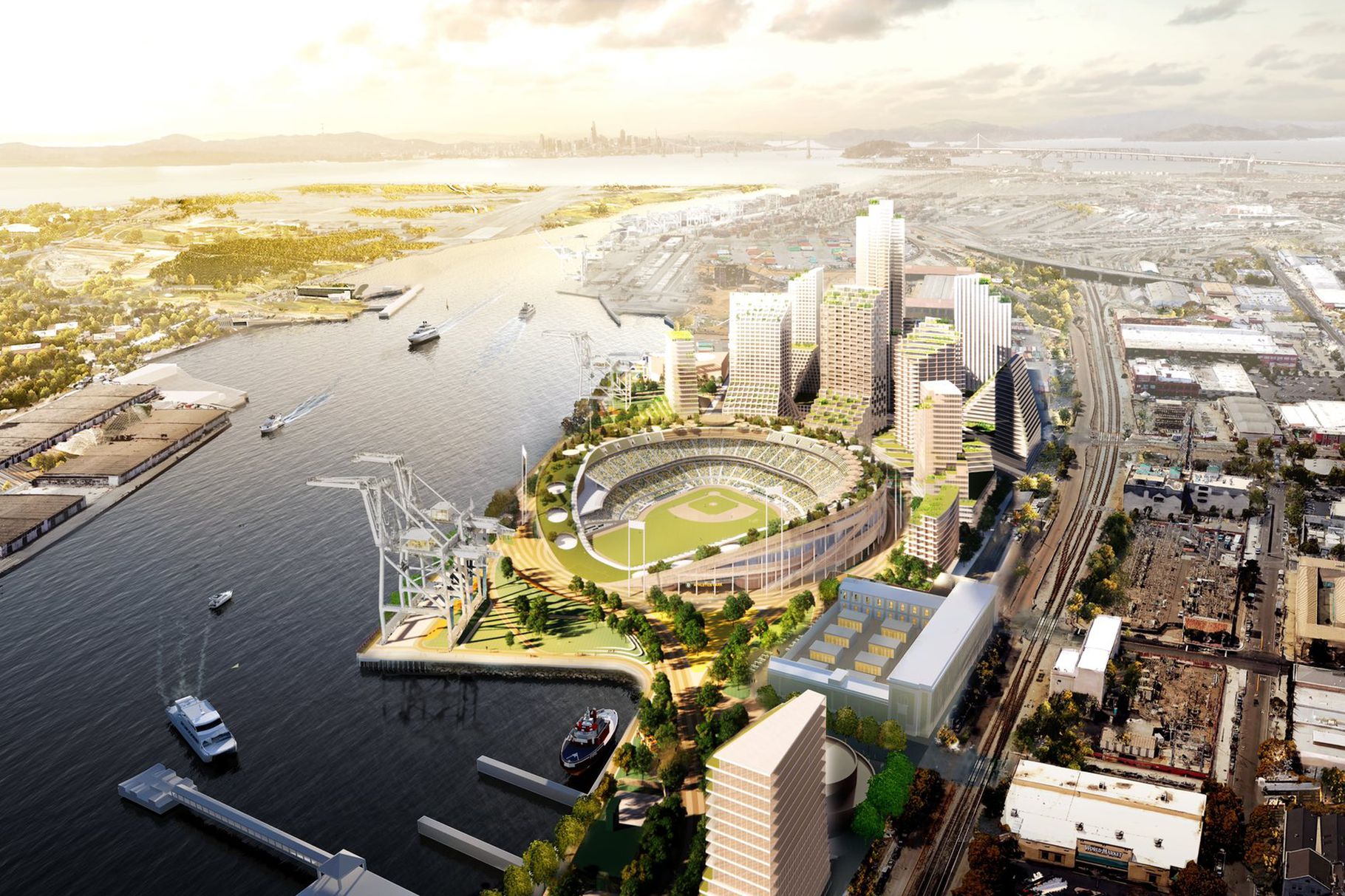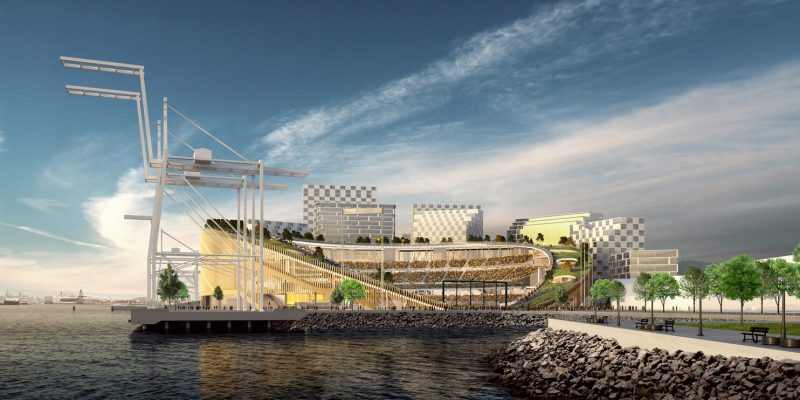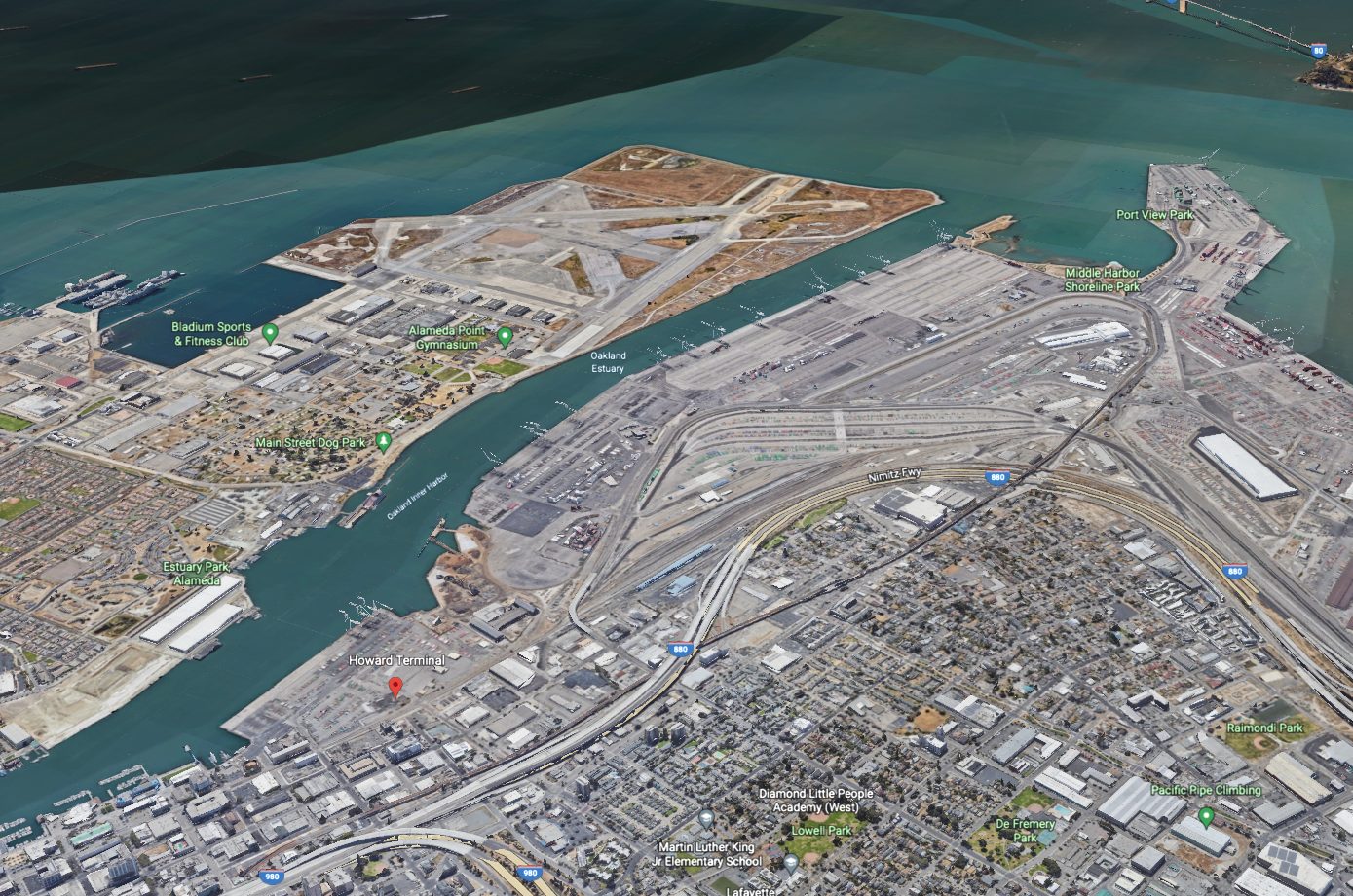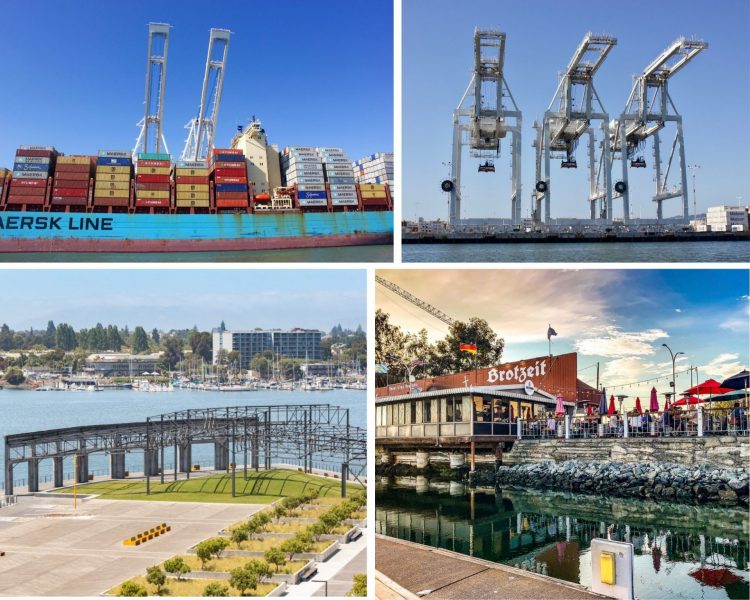
Proposed Oakland A’s Stadium on the Estuary Passes Key Vote on Road to Approval
In another piece of the Bay Area’s changing waterfront puzzle, lawmakers have “changed the designation” for a terminal in the Port of Oakland that may open the door for a new baseball stadium, as well as housing and amenities, to be built in its place.
Critics say that the new construction could usher in major development in an industrial zone, and interfere with the Port’s operations, while advocates for the new stadium say that existing terminals will suffice, and that the new development will be an economic engine for the City of Oakland. The latter is a claim both common and suspect, as Oakland will almost certainly subsidize the new stadium with taxpayer dollars.
Regardless, and ready or not, the Bay Area’s waterfront continues to transform before our very eyes.
Last week, the Bay Conservation and Development Commission voted to allow Howard Terminal, on the south side of the Port of Oakland and inside the Estuary, to change its designation from “port priority use,” and allow it to be used for “other purposes,” clearing the path for the Oakland Athletics to build a new stadium.
The BCDC vote does not mean the stadium project has been completely green-lighted; the vote was the “first in a series of legal hurdles the team would have to overcome before it gets permission to break ground for the project,” according to ABC 7 News. “A’s President Dave Kaval said the vote is a ‘huge win’ for the project.'”


Through what lens should we view the seeming inevitability of a new stadium on the Estuary? Do we lament the further eroding of the working waterfront? Do we use the “G” word, or gentrification — of which projects like the new A’s stadium are the very definition — in a bad way, believing that it makes everything more expensive and more crowded? Do we feel nostalgic for the good old days when the Bay was just the way we liked it?
Or do we herald progress, and say to hell with nostalgia? A new stadium could be kind of cool, and could, with the right lobbying, include docks and anchorages for sailors. Is it possible to support the working waterfront as well as some new development, or are those ideas mutually exclusive?

How busy is Howard Terminal, and Oakland’s industrial waterfront in general?
“The Port of Oakland is the third-busiest port in California, but container-cargo volume has hardly budged, rising less than 0.5% since 2005,” writes gCaptain, a website for maritime professionals. “After ranking as the fourth-busiest hub in the US just a few years ago, today, the port’s traffic barely cracks the top 10.”
GCaptain said that although Howard Terminal is no longer used to unload ships, it now serves as a parking lot for trucks, as well as a pop-up container yard and a training site for dockworkers. “For the industry, allowing it to be used for anything other than maritime operations would deal another blow to already-stretched supply chains.”
Erin Wright, a third-generation longshoreman, told ABC 7 News that the maritime community opposes the new stadium project because it would interfere with the shipping and receiving of cargo. “Our port is busier than it’s been in my 33 years. We need [Howard Terminal] for operations. We are using it; we have been using it every day.
“Everyone with a working brain knows that the building of houses in an industrial zone is going to have a huge negative impact on all operations and lead to a downturn and degradation of our seaports,” Wright told ABC 7 News.

The chief operating officer for the Port of Oakland said that Howard Terminal “is simply not operational (sic) viable nor financially feasible — and it if is not today, it is not going to be in the future,” ABC 7 reported.
Last week, BCDC staff said the Oakland Athletics had demonstrated that removing Howard Terminal from a “priority use” designation “would not detract from the region’s capability to meet the projected growth in cargo, and has demonstrated that the cargo forecast can be met with existing terminals,” ABC 7 said.
Advocates of the new stadium development say that it will be “an economic engine” for the City of Oakland, and generate hundreds of new jobs and millions in tax revenue. This is the mantra of all new sports stadiums, and the veracity of these projects being cash cows is suspect.
Oakland A’s president Dave Kaval promised the team would provide $450 million of community benefits, according to an opinion piece by the Mercury News. “But taxpayers, not the A’s, would foot the bill for those benefits — and the value is minimal because the amount is stretched over 45 years with no adjustment for the lost value due to inflation. The team also wants the city to create a massive tax district affecting property owners along a one-and-a-half-mile-long swath of land to help fund the city services and infrastructure that would be needed to serve the A’s project.
“In essence, Kaval portrays the team as a paragon of charity while proposing using public money to fund the supposed generosity.”
The Mercury News said that taxpayers are still footing the bill for improvements to the Oakland Coliseum that temporarily brought the Raiders back to Oakland from Los Angeles in 1995. The Raiders moved to Las Vegas in 2020.
This is maybe neither here nor there, but how are the always-underdog, ‘Moneyball’ Oakland Athletics doing this season? With a record of 27-55, the A’s are the worst team in baseball.

The A’s should stay right where they are. The Coliseum is directly served by BART, eliminating a lot of driving. If this new stadium is built, the closest BART station (12th Street) will be a full mile away, and most people will drive instead of making that walk. The additional oil consumption and air pollution alone is reason enough to oppose this project. Better that the A’s leave town than build a stadium that will cause a lot more people to drive.